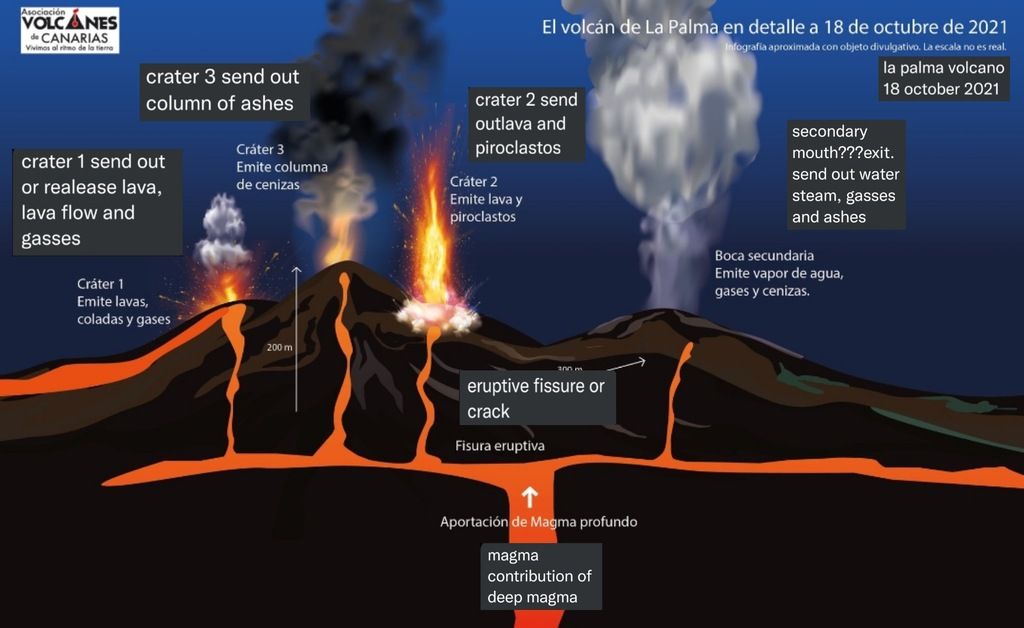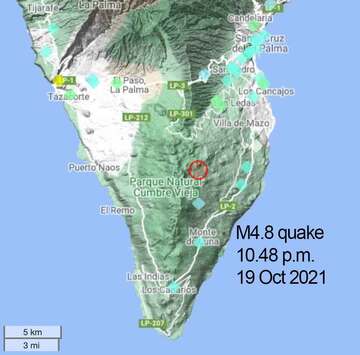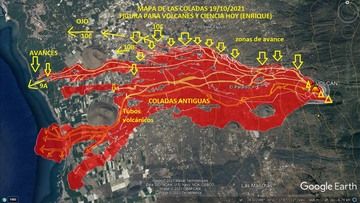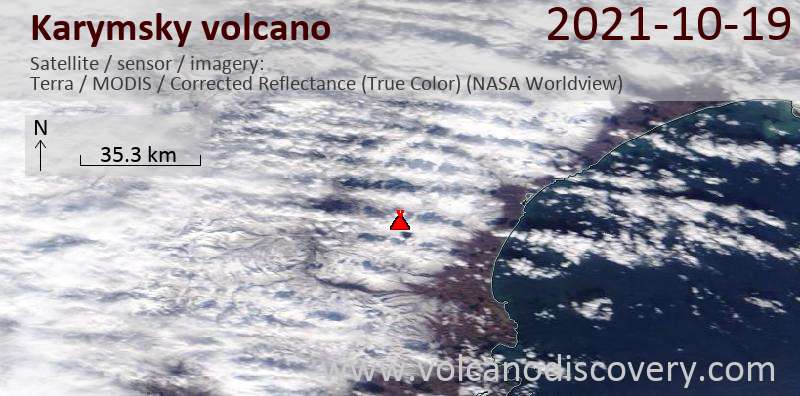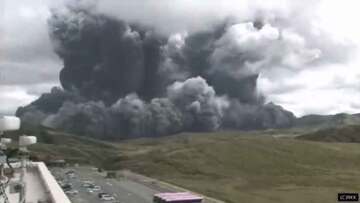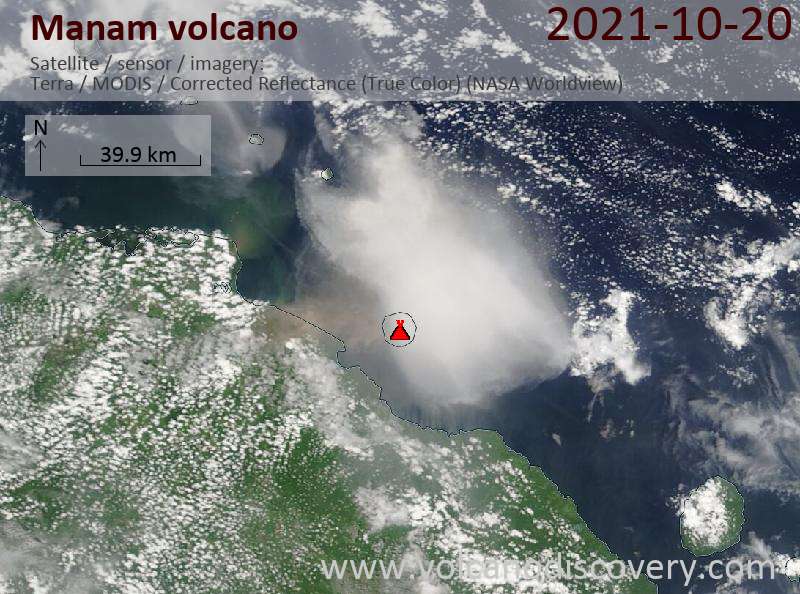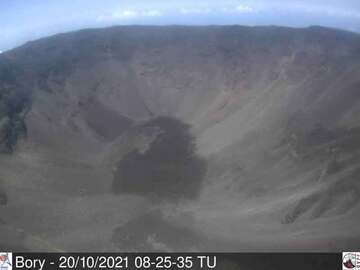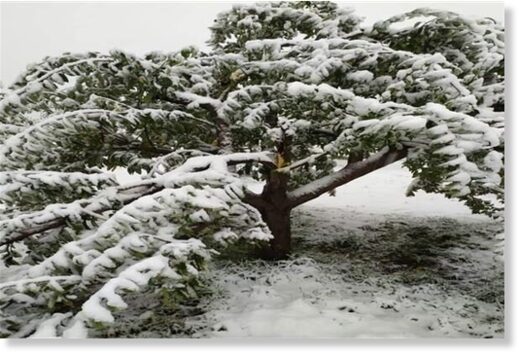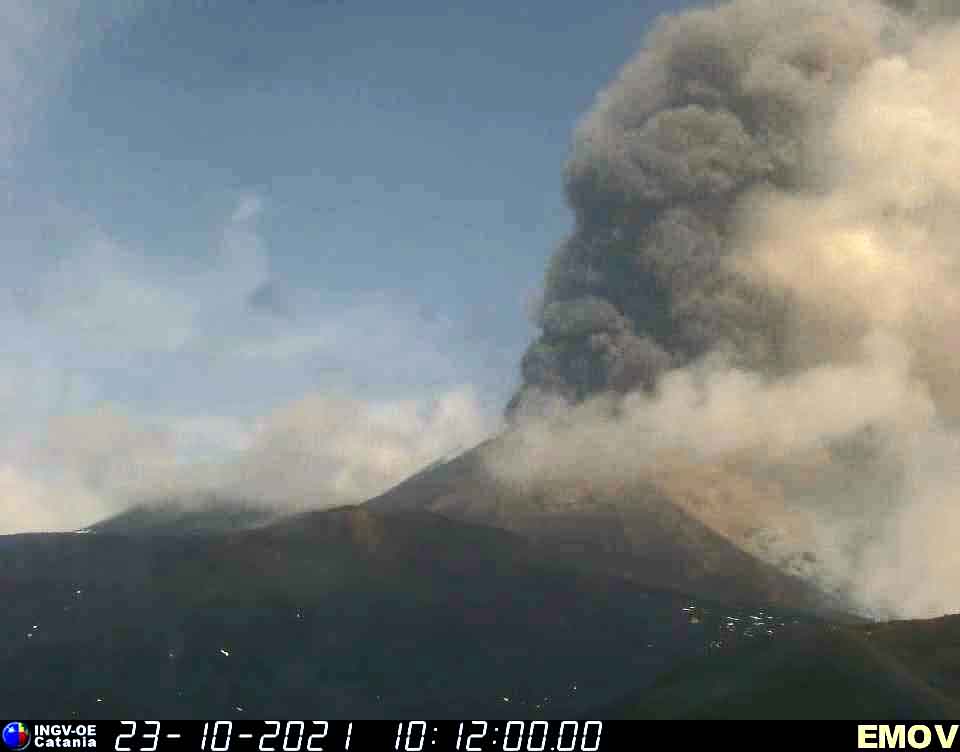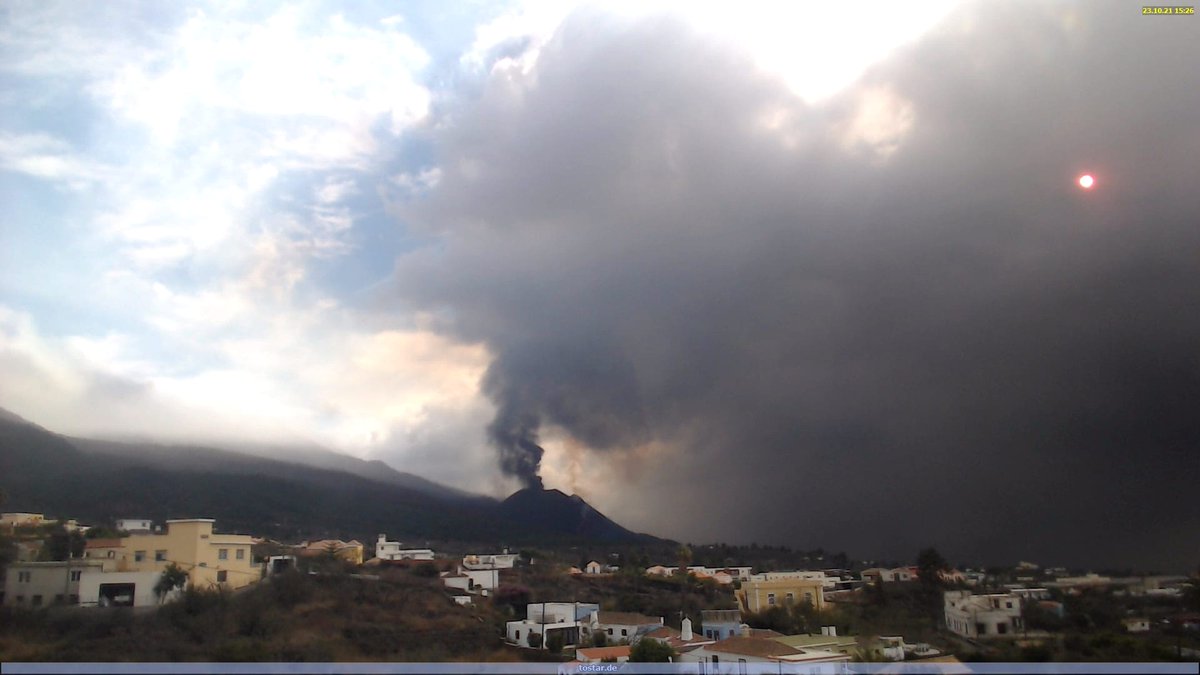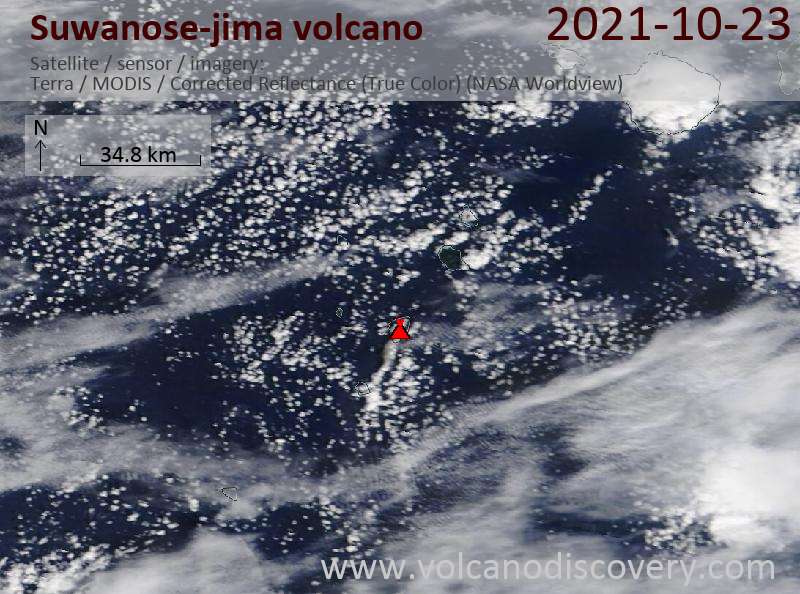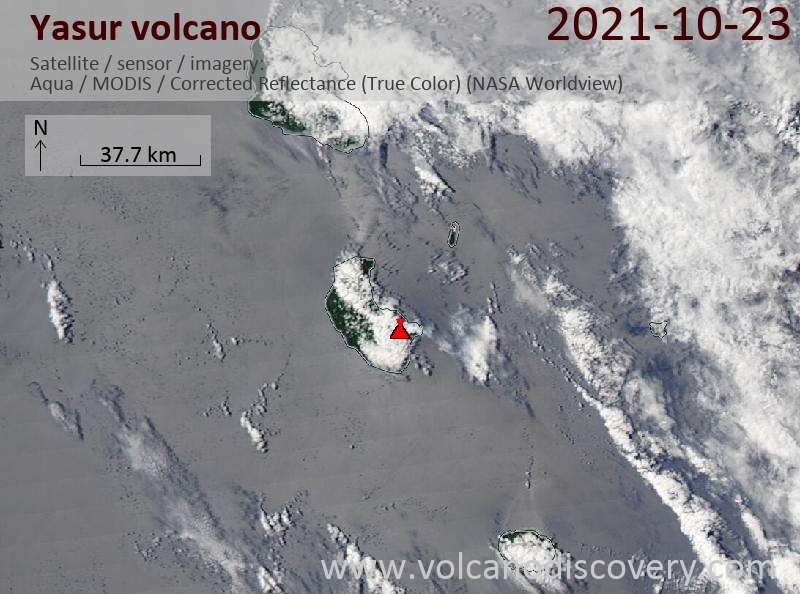TxGal
Day by day
Heavy Snow Shuts Down Gillette, "Cold and Stormy Winter" Forecast For Canada, "Scientific Misconduct", + The Upshot of Demonizing Carbon - Electroverse

Articles Extreme Weather GSM
HEAVY SNOW SHUTS DOWN GILLETTE, “COLD AND STORMY WINTER” FORECAST FOR CANADA, “SCIENTIFIC MISCONDUCT”, + THE UPSHOT OF DEMONIZING CARBON
OCTOBER 15, 2021 CAP ALLON
HEAVY SNOW SHUTS DOWN GILLETTE, WYOMING
It may only be mid-October, but heavy snowfalls are shutting down towns and cities in the Mountain West.
Through Tuesday and Wednesday, a total of 13.8 inches of early-season snow buried the downtown area of Gillette, Wyoming, according to the National Weather Service (NWS) Rapid City.
As reported by county17.com, the storm forced the City of Gillette, Campbell County School District, Gillette College, Campbell County, and many small businesses to shut down on Wednesday. It also led to the implementation of Level 1 and Level 2 snow emergencies for the first time in a year and a half.
“It was a really good storm for Gillette,” said NWS meteorologist Em Wong. “The 13.8 inches is way more than the monthly average for downtown Gillette (which stands at 3.7 inches).”
This is already the city’s sixth snowiest October in recorded history–with still half of the month to go.
Campbell County received a whopping 18 inches.
And a number of daily snowfall records fell in and around the Gillette area, points out Wong.

Kids enjoying a snow day [Jessica Joy Jackson-Meade].
A “COLD AND STORMY WINTER” IS FORECAST FOR CANADA
Many Canadians can expect a cold and stormy winter, according to AccuWeather’s latest winter forecast. A La Nina event has surfaced for the second consecutive year over region 3.4 of the Pacific Ocean, stated NOAA in a recent news release.
Last winter, the month of February brought with it record low temperatures to much of Canada. And AccuWeather is suggesting that t a similar setup will hit again this winter, particularly across the western half of the country, due to “an amplified polar jet stream” (a phenomenon tied to spells of low solar activity–such as we’re experiencing now).
“The upcoming winter is expected to be fairly stormy from southern British Columbia through the Canadian Rockies,” said AccuWeather meteorologist Brett Anderson. “Abundant snowfall is expected throughout much of ski country from the coastal range of British Columbia through the Rockies of western Alberta.”
In central Canada, La Nina, combined with the polar vortex, could result in very frigid conditions.
“I believe we may see at least three extreme blasts of bitterly cold air dropping down into the southern Prairies this winter,” added Anderson. During those events, he expects temperatures to dip below -30C (-22F).
Also, average temperatures in the southern Prairies could hold as much as 2C below the winter average.
Ontario and Quebec can expect more snow, according to the forecast; however, eastern Canada is expected to experience above-average temperatures, at least at first: “The greatest threat for powerful coastal storms in Atlantic Canada will come in February,” Anderson said. “The clash of advancing cold air from the west with the warm waters of the northwest Atlantic may lead to some rapidly developing storms with a lot of wind and heavy precipitation from the Maritimes to Newfoundland.”
With regards the second half of October, heavy snow is forecast to persist:

GFS Total Snowfall (inches) Oct 15 – Oct 31 [tropicaltidbits.com].
HOW CLIMATE CHANGE COULD EFFECT BICYCLE USE
In another example of ‘if you’re study supports climate change we’ll pony up the dough’ comes this absurd waste of everybody’s time, effort and dignity: According to a new study PUBLISHED in the Journal of Transport Geography titled “How does weather affect bikeshare use?”, global warming could soon change the way people use their bicycles.
I…
Just…
Don’t have it in me…
Basically though, the ‘researchers’ have concluded that terrifying terra firma broiling (aka AGW) will likely see the use of bikeshare services increase slightly in colder climates and decrease slightly in warmer areas — money well spent!
“SCIENTIFIC MISCONDUCT”
And finally, and for all those still blindly believing in ‘the science’ comes the news that some of the world’s largest publishers have come together to tackle what they call ‘the growing problem of image manipulation in scientific papers’.
These publishers have developed a three-tier classification system that editors can use to flag suspicious content, and detailed instructions on how to deal with doctored images.
A working group of representatives from eight publishers, including Elsevier, JAMA, Wiley and Springer Nature, as well as industry group STM, based in The Hague, the Netherlands, has created the guide, which was published on preprint server OSF on Sept 9 (J. van Rossum et al. Preprint; 2021). The publishers say that it should be used as part of a screening process before publication, or to address issues raised about published articles.
The guide lists three categories of manipulation, ranging from level one — in which images have been “beautified” in a way that does not affect a paper’s conclusions — to level three, which includes “severe image manipulation, with unequivocal evidence of obfuscation or fabrication”. Each level has a list of examples and actions for editors to take.
Image-integrity specialists welcome the guidelines, but say they are overdue: “They will not prevent science misconduct, but they provide stronger scrutiny both at the submission stage, as well as after publication,” says Elisabeth Bik, a research-integrity consultant based in California.
THE UPSHOT OF DEMONIZING CARBON
Multinational conglomerates own the politicians, and in turn the world.
Among many other feats, these seemingly unstoppable entities have successfully demonized carbon, the building blocks of all known life — a tremendously malevolent achievement. What this demonizing has done is to drive the energy sectors out of favor–not just from the viewpoint of ideologically-hamstrung politicians, but also in terms of the money flow.
Over the past decade, the money just hasn’t been entering gas, coal and oil stocks, investors haven’t been buying into these ‘scourges of the planet’; and as a result, the companies themselves haven’t been able to properly reinvest in infrastructure.
This is a key component of today’s global energy crisis — a crisis I believe is no accident.
In conjunction with the cripplingly-cold winter of 2021-22 –which depleted coal and gas supplies– as well as the abject failure that has been renewables, this orchestrated energy shortage appears to be another canary in the coal mine, a further sign that The Great Reset is in play. Exactly how dark these coming years get remains unclear, but please heed the warnings: From the release of a man made virus to vaccine mandates, from lockdowns to empty supermarket shelves, from spiraling inflation to a crippling energy shortage — the only guarantee in all this is that tough times lie ahead. I just pray that the masses aren’t tempted to relinquish the few freedoms we have left in return for the phony promise of future prosperity–aka build back better.
Enjoy your weekend.
I’m off out to build a new fence for my goats — the buggers keep escaping (any tips on keeping them in would be appreciated).
The COLD TIMES are returning, the mid-latitudes are REFREEZING, in line with the great conjunction, historically low solar activity, cloud-nucleating Cosmic Rays, and a meridional jet stream flow (among other forcings).
Both NOAA and NASA appear to agree, if you read between the lines, with NOAA saying we’re entering a ‘full-blown’ Grand Solar Minimum in the late-2020s, and NASA seeing this upcoming solar cycle (25) as “the weakest of the past 200 years”, with the agency correlating previous solar shutdowns to prolonged periods of global cooling here.
Furthermore, we can’t ignore the slew of new scientific papers stating the immense impact The Beaufort Gyre could have on the Gulf Stream, and therefore the climate overall.


Prepare accordingly— learn the facts, relocate if need be, and grow your own.

Articles Extreme Weather GSM
HEAVY SNOW SHUTS DOWN GILLETTE, “COLD AND STORMY WINTER” FORECAST FOR CANADA, “SCIENTIFIC MISCONDUCT”, + THE UPSHOT OF DEMONIZING CARBON
OCTOBER 15, 2021 CAP ALLON
HEAVY SNOW SHUTS DOWN GILLETTE, WYOMING
It may only be mid-October, but heavy snowfalls are shutting down towns and cities in the Mountain West.
Through Tuesday and Wednesday, a total of 13.8 inches of early-season snow buried the downtown area of Gillette, Wyoming, according to the National Weather Service (NWS) Rapid City.
As reported by county17.com, the storm forced the City of Gillette, Campbell County School District, Gillette College, Campbell County, and many small businesses to shut down on Wednesday. It also led to the implementation of Level 1 and Level 2 snow emergencies for the first time in a year and a half.
“It was a really good storm for Gillette,” said NWS meteorologist Em Wong. “The 13.8 inches is way more than the monthly average for downtown Gillette (which stands at 3.7 inches).”
This is already the city’s sixth snowiest October in recorded history–with still half of the month to go.
Campbell County received a whopping 18 inches.
And a number of daily snowfall records fell in and around the Gillette area, points out Wong.

Kids enjoying a snow day [Jessica Joy Jackson-Meade].
A “COLD AND STORMY WINTER” IS FORECAST FOR CANADA
Many Canadians can expect a cold and stormy winter, according to AccuWeather’s latest winter forecast. A La Nina event has surfaced for the second consecutive year over region 3.4 of the Pacific Ocean, stated NOAA in a recent news release.
Last winter, the month of February brought with it record low temperatures to much of Canada. And AccuWeather is suggesting that t a similar setup will hit again this winter, particularly across the western half of the country, due to “an amplified polar jet stream” (a phenomenon tied to spells of low solar activity–such as we’re experiencing now).
“The upcoming winter is expected to be fairly stormy from southern British Columbia through the Canadian Rockies,” said AccuWeather meteorologist Brett Anderson. “Abundant snowfall is expected throughout much of ski country from the coastal range of British Columbia through the Rockies of western Alberta.”
In central Canada, La Nina, combined with the polar vortex, could result in very frigid conditions.
“I believe we may see at least three extreme blasts of bitterly cold air dropping down into the southern Prairies this winter,” added Anderson. During those events, he expects temperatures to dip below -30C (-22F).
Also, average temperatures in the southern Prairies could hold as much as 2C below the winter average.
Ontario and Quebec can expect more snow, according to the forecast; however, eastern Canada is expected to experience above-average temperatures, at least at first: “The greatest threat for powerful coastal storms in Atlantic Canada will come in February,” Anderson said. “The clash of advancing cold air from the west with the warm waters of the northwest Atlantic may lead to some rapidly developing storms with a lot of wind and heavy precipitation from the Maritimes to Newfoundland.”
With regards the second half of October, heavy snow is forecast to persist:

GFS Total Snowfall (inches) Oct 15 – Oct 31 [tropicaltidbits.com].
HOW CLIMATE CHANGE COULD EFFECT BICYCLE USE
In another example of ‘if you’re study supports climate change we’ll pony up the dough’ comes this absurd waste of everybody’s time, effort and dignity: According to a new study PUBLISHED in the Journal of Transport Geography titled “How does weather affect bikeshare use?”, global warming could soon change the way people use their bicycles.
I…
Just…
Don’t have it in me…
Basically though, the ‘researchers’ have concluded that terrifying terra firma broiling (aka AGW) will likely see the use of bikeshare services increase slightly in colder climates and decrease slightly in warmer areas — money well spent!
“SCIENTIFIC MISCONDUCT”
And finally, and for all those still blindly believing in ‘the science’ comes the news that some of the world’s largest publishers have come together to tackle what they call ‘the growing problem of image manipulation in scientific papers’.
These publishers have developed a three-tier classification system that editors can use to flag suspicious content, and detailed instructions on how to deal with doctored images.
A working group of representatives from eight publishers, including Elsevier, JAMA, Wiley and Springer Nature, as well as industry group STM, based in The Hague, the Netherlands, has created the guide, which was published on preprint server OSF on Sept 9 (J. van Rossum et al. Preprint; 2021). The publishers say that it should be used as part of a screening process before publication, or to address issues raised about published articles.
The guide lists three categories of manipulation, ranging from level one — in which images have been “beautified” in a way that does not affect a paper’s conclusions — to level three, which includes “severe image manipulation, with unequivocal evidence of obfuscation or fabrication”. Each level has a list of examples and actions for editors to take.
Image-integrity specialists welcome the guidelines, but say they are overdue: “They will not prevent science misconduct, but they provide stronger scrutiny both at the submission stage, as well as after publication,” says Elisabeth Bik, a research-integrity consultant based in California.
THE UPSHOT OF DEMONIZING CARBON
Multinational conglomerates own the politicians, and in turn the world.
Among many other feats, these seemingly unstoppable entities have successfully demonized carbon, the building blocks of all known life — a tremendously malevolent achievement. What this demonizing has done is to drive the energy sectors out of favor–not just from the viewpoint of ideologically-hamstrung politicians, but also in terms of the money flow.
Over the past decade, the money just hasn’t been entering gas, coal and oil stocks, investors haven’t been buying into these ‘scourges of the planet’; and as a result, the companies themselves haven’t been able to properly reinvest in infrastructure.
This is a key component of today’s global energy crisis — a crisis I believe is no accident.
In conjunction with the cripplingly-cold winter of 2021-22 –which depleted coal and gas supplies– as well as the abject failure that has been renewables, this orchestrated energy shortage appears to be another canary in the coal mine, a further sign that The Great Reset is in play. Exactly how dark these coming years get remains unclear, but please heed the warnings: From the release of a man made virus to vaccine mandates, from lockdowns to empty supermarket shelves, from spiraling inflation to a crippling energy shortage — the only guarantee in all this is that tough times lie ahead. I just pray that the masses aren’t tempted to relinquish the few freedoms we have left in return for the phony promise of future prosperity–aka build back better.
Enjoy your weekend.
I’m off out to build a new fence for my goats — the buggers keep escaping (any tips on keeping them in would be appreciated).
The COLD TIMES are returning, the mid-latitudes are REFREEZING, in line with the great conjunction, historically low solar activity, cloud-nucleating Cosmic Rays, and a meridional jet stream flow (among other forcings).
Both NOAA and NASA appear to agree, if you read between the lines, with NOAA saying we’re entering a ‘full-blown’ Grand Solar Minimum in the late-2020s, and NASA seeing this upcoming solar cycle (25) as “the weakest of the past 200 years”, with the agency correlating previous solar shutdowns to prolonged periods of global cooling here.
Furthermore, we can’t ignore the slew of new scientific papers stating the immense impact The Beaufort Gyre could have on the Gulf Stream, and therefore the climate overall.


Prepare accordingly— learn the facts, relocate if need be, and grow your own.














